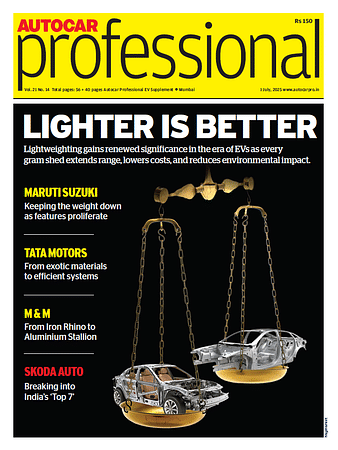We Have Seen A Significant Increase In Demand From Northern States - Volvo CE
Dimitrov Krishnan, Managing Director of Volvo Construction Equipment India, says paucity of funds seems to be slowing development activity in India’s southern states, while UP, Gujarat and Maharashtra remain unaffected.
India’s construction equipment market is undergoing a notable geographical realignment, with demand from the southern states slowing down comparatively. Once key drivers of the sector, states such as Kerala, Tamil Nadu, Karnataka, Andhra Pradesh, and Telangana, have seen their share of demand shrink.
In contrast, Maharashtra, Gujarat, Uttar Pradesh, and the northeastern region are emerging as new growth engines, sustaining momentum in the industry. Dimitrov Krishnan, Managing Director of Volvo Construction Equipment India, attributes this shift to changing economic conditions and infrastructure priorities across states.
“Today the large market demand is coming from the western and northeastern parts of the country,” Krishnan said.
According to observers, the current challenges in the industry reflect broader fiscal challenges as increase in social welfare spending impacts overall state finances. Many states, dealing with high debt burdens and slow revenue growth, are currently reallocating funds from sectors like infrastructure to meet rising expenditure demands.
The financial strain is more pronounced in states with limited tax bases and a greater dependence on central grants. While welfare initiatives provide short-term support to beneficiaries, they also present considerations for long-term fiscal sustainability.
While such largesse may offer short-term relief to beneficiaries, it risks long-term financial stability of the state. Many states, already grappling with high debt burdens and sluggish revenue growth, are being forced to divert funds from critical sectors like infrastructure and healthcare.
The strain is particularly acute in states with weak tax bases and heavy reliance on central grants. According to Krishnan, while national infrastructure projects are progressing across the country, the impact of state government initiatives remains limited.
Many states face financial difficulties, preventing them from fully realising the potential of state-driven infrastructure projects. It is estimated that around 8-10 states are undergoing a slowdown, which must be addressed for them to contribute effectively to market demand.
Despite these challenges, large states such as Maharashtra, Gujarat, and Uttar Pradesh continue to drive volumes. The national capital region and the northeast are also playing a crucial role in maintaining sustained demand. While concerns have been raised about whether states like Maharashtra and Uttar Pradesh might face similar financial strains, industry observers see no indications of a slowdown in these regions at present.
The financial stability of these states appears intact, and no major issues have emerged that could constrain their infrastructure spending, Krishnan said. "Thankfully, large states like Maharashtra, Gujarat, UP, NCR have been doing decently well," he added.
Krishnan expects momentum to return soon, pointing out that a new government typically takes about a year to stabilised before projects gain momentum. He points out that the second, third, and fourth years of a five-year term are usually the most prolific in terms of infrastructure development.
Despite such electoral fluctuations, says Krishnan, India's long-term infrastructure strategy remains clear and consistent. Moreover, the 2047 'Viksit Bharat' agenda has ensured that major projects—including roads, railways, and river-linking initiatives—align with this vision.
He emphasised that the strategic direction for infrastructure development is well-defined, and there is no significant plicy shift—only the need for operational execution. Entering 2025, he adds, there is optimism about the industry's growth, and the economic slowdown does not appear severe enough to be a major concern.
RELATED ARTICLES
Renault Group Appoints Duncan Minto as Interim CEO
Over nearly three decades, Minto has held several key positions across finance, investor relations, and regional leaders...
Indian Racing Festival 2025 Begins with Driver Draft in Mumbai
The 2025 season will begin in August and feature races across multiple cities in India.
Himadri Speciality Chemical to Set Up Wholly Owned Subsidiary in UAE; Appoints New KMP
Board of Directors approves international expansion plan and key management appointment at July 15 meeting.





 By Shahkar Abidi
By Shahkar Abidi
 27 Feb 2025
27 Feb 2025
 6490 Views
6490 Views





 Autocar Professional Bureau
Autocar Professional Bureau


 Arunima Pal
Arunima Pal

 Sarthak Mahajan
Sarthak Mahajan

